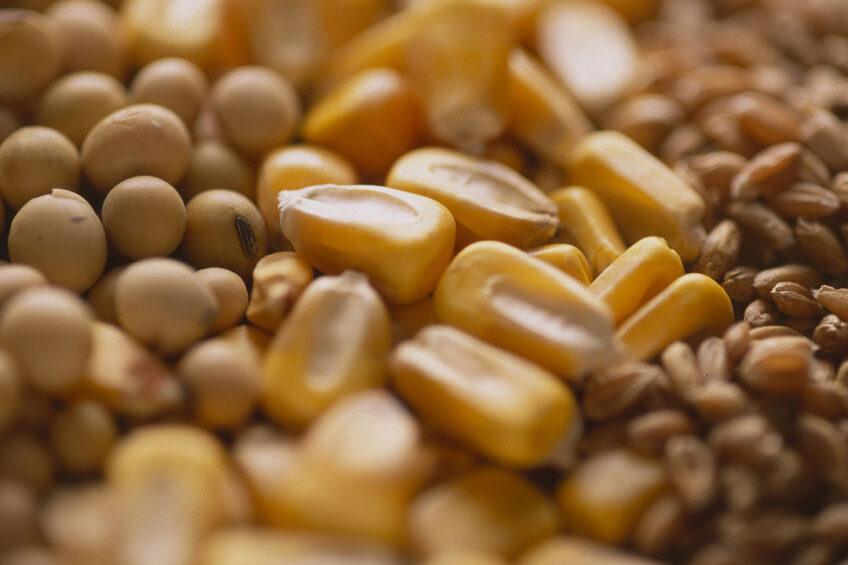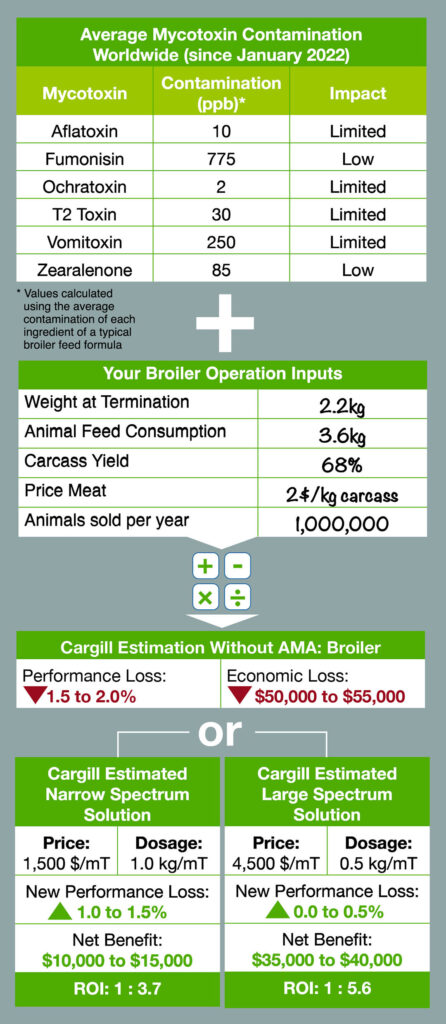Unveiling advanced solutions for mycotoxin contamination

When it comes to combatting mycotoxins in feed, challenges include dealing with many unknowns. The aim is to piece together your precise contamination level within your feed ingredients, to know how mycotoxins are impacting animal performance, and which additive is right to reduce negative impacts on performance.
It is widely recognised that mycotoxins pose risks to the health and performance of farm animals. By adversely affecting animal performance, mycotoxins also carry significant economic and potentially sustainability consequences for farmers. Numerous studies reveal their negative effects on growth rate, feed efficiency, immune function, reproductive performance, organ health, and many other impacts across animal species, even at low contamination levels. These effects can lead to increased feed consumption, possible medical interventions, and significant economic losses and mycotoxins are even more detrimental to the good financial health of farms when they reduce animal performance while not crossing regulatory thresholds or showing visible signs of toxicity. Proactively helping to mitigate mycotoxins below regulatory thresholds in feed or before seeing clinical symptoms is essential to ensure animal performance and therefore profitability. However, accurately determining the concentration of mycotoxins in the feed as well as quantifying their real impacts on performance remain two real challenges.
Analysis
Cargill has been monitoring mycotoxins in its operations for decades, implementing strict protocols and, where approved, the judicious use of effective anti-mycotoxin additives adapted to each situation. Most mycotoxin analyses performed on the ingredients used by the company are centralised in a database. Over 300,000 analyses are compiled each year on more than a hundred ingredients and throughout almost 50 countries. This gives Cargill an unrivalled view of the mycotoxin contamination situation in many countries. Our robust database combined with analyses directly carried out at your operations, means that finding precise mycotoxin contamination level within your feed ingredients is now more accessible. Now that you know which mycotoxins you have in the ingredients you intend to use, you may wonder how are these mycotoxins impacting your animals’ performance? Recent advancements have enabled the development of Mycotoxin Impact Calculator which estimates the potential decrease in animal performance based on mycotoxin levels in the feed. Based on a metanalysis of several hundred scientific articles and internal research, Cargill colleagues formulated specific equations estimating the reductions in animal performance as a function of the mycotoxin concentration of the individual ingredients or the feed itself. Our calculator enables you to put a figure on estimated average performance losses expected by the mycotoxins specific to your operation, which can serve as an indicator of potential production losses. By taking your specific production data such as the number of animals produced, their selling price, carcass yield and others, the calculator estimates the financial impact that mycotoxins can have on your business.

Effective technologies
To meet our commitments to animal welfare and food safety, Cargill developed affordable and effective technologies to combat the mycotoxins detected during its analyses. Over the years, we have carried out a considerable number of trials to identify the best technologies and assess their effectiveness to mitigate the mycotoxins present in the feed. These research results form the foundation of our equations which estimate the quantity of products necessary to minimise the impact of the mycotoxin contamination. By integrating these equations into the calculator, it is possible to select the solution that will help restore animal performance and optimise return on investment. Our calculator provides valuable insights for farmers and nutritionists, enabling them to optimise feed management strategies effectively (Figure 1).
Mycotoxin contamination in animal feed can have negative impacts on animal performance, leading to higher feed consumption and/or lower slaughter weights, it can also have far-reaching implications for sustainability in animal nutrition and agriculture. Understanding the effects of mycotoxins on animal health and productivity is crucial in developing preventive strategies. Innovative tools such as the Mycotoxin Impact Calculator can aid in this process by accurately assessing the potential impact of mycotoxin contamination and guiding feed management decisions. Fostering collaboration among researchers, feed producers, farmers, and regulatory authorities is essential in enhancing knowledge and developing efficient mycotoxin management strategies. By working together, we can safeguard both animal welfare, performance, and therefore the long-term sustainability of agriculture, ensuring the continued production of safe and nutritious animal feed, while minimising environmental impacts.
Proactive strategies
Mycotoxin contamination poses significant challenges to animal performance, farmer profitability, and sustainability. The adverse effects of mycotoxins on animal health and productivity necessitate the implementation of proactive strategies and the utilisation of advanced tools such as the Mycotoxin Impact Calculator to help understand impacts. To fight effectively against mycotoxins, it’s crucial to estimate their presence in the feed as accurately as possible, to understand their real impact on animal performance and to use the right solution, at the right time and with the right use rate to mitigate their unfavourable effects. Cargill offers valuable resources, including analysis databases, to identify at-risk raw materials and estimate potential performance and financial losses.
Author:
Thomas Pecqueur, Global Anti-Mycotoxin Agents Technology Lead, Cargill Animal Nutrition







